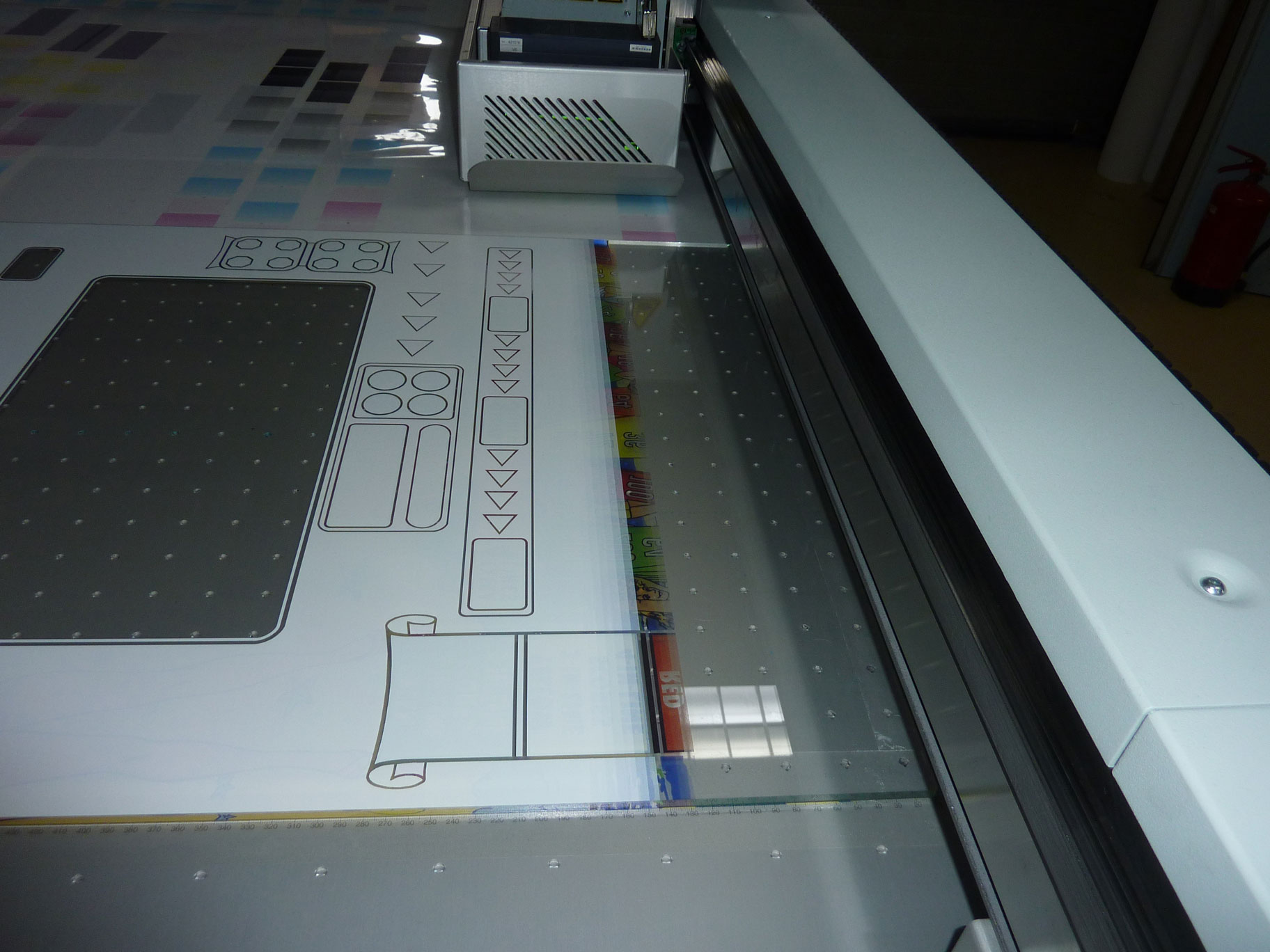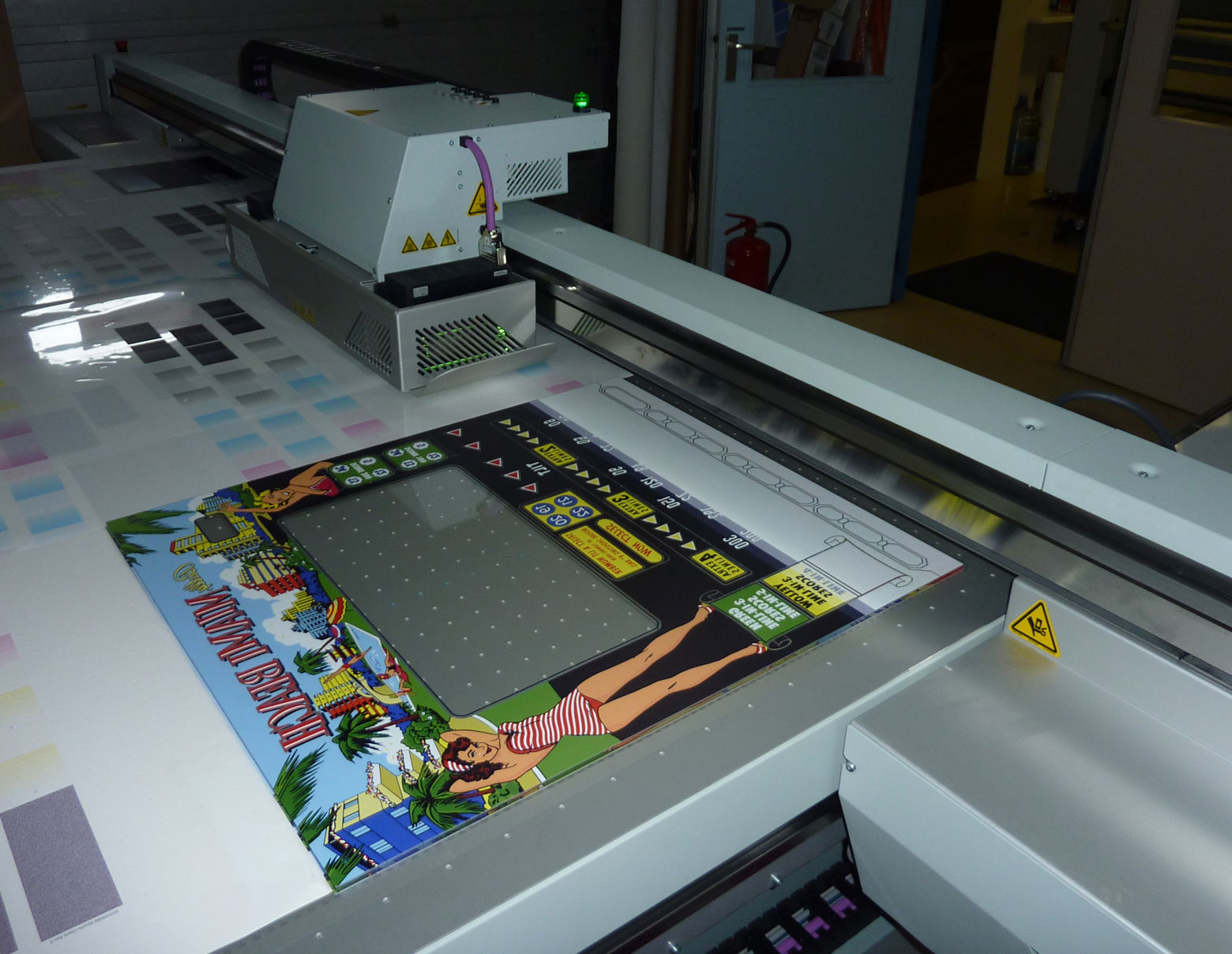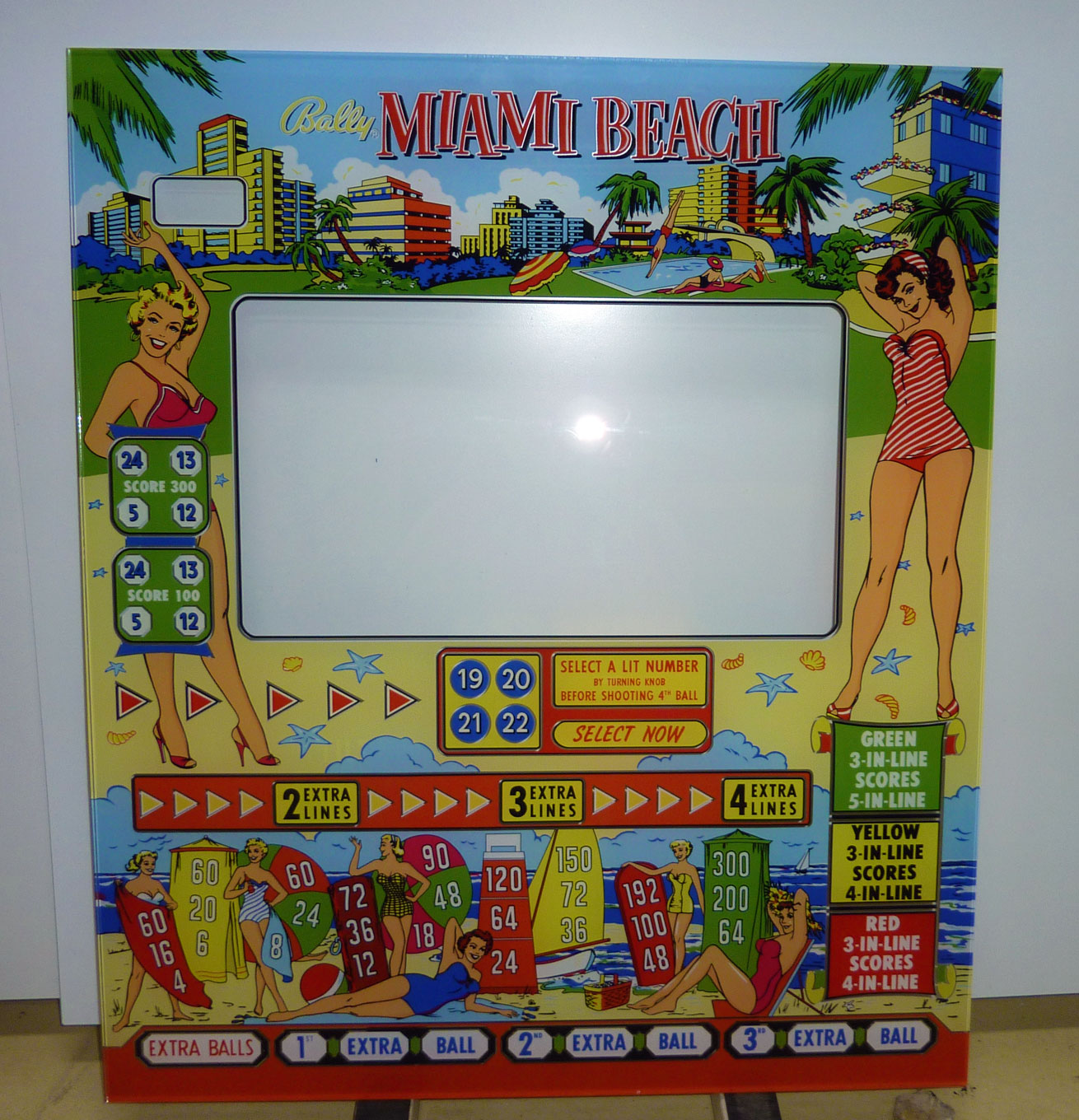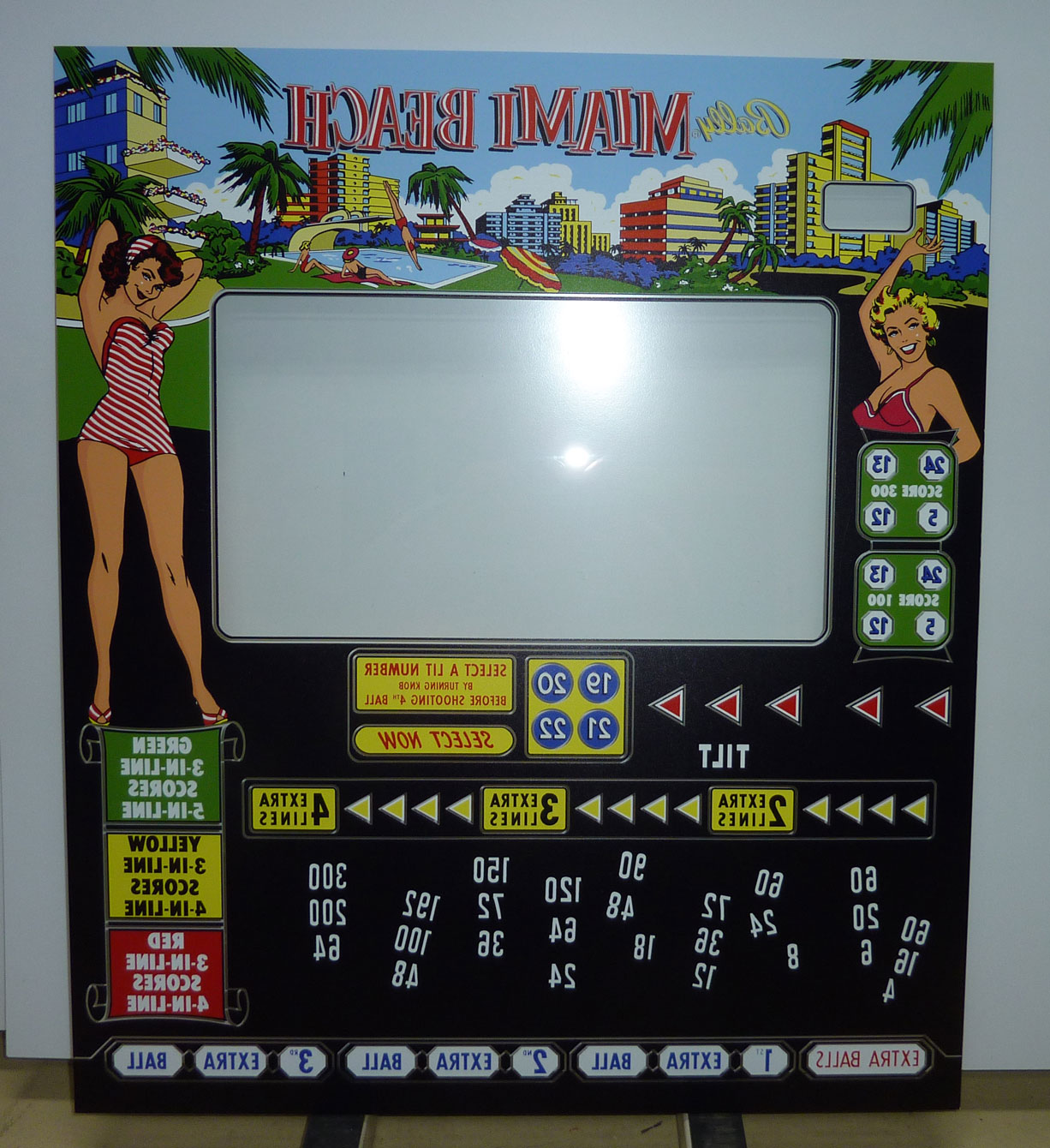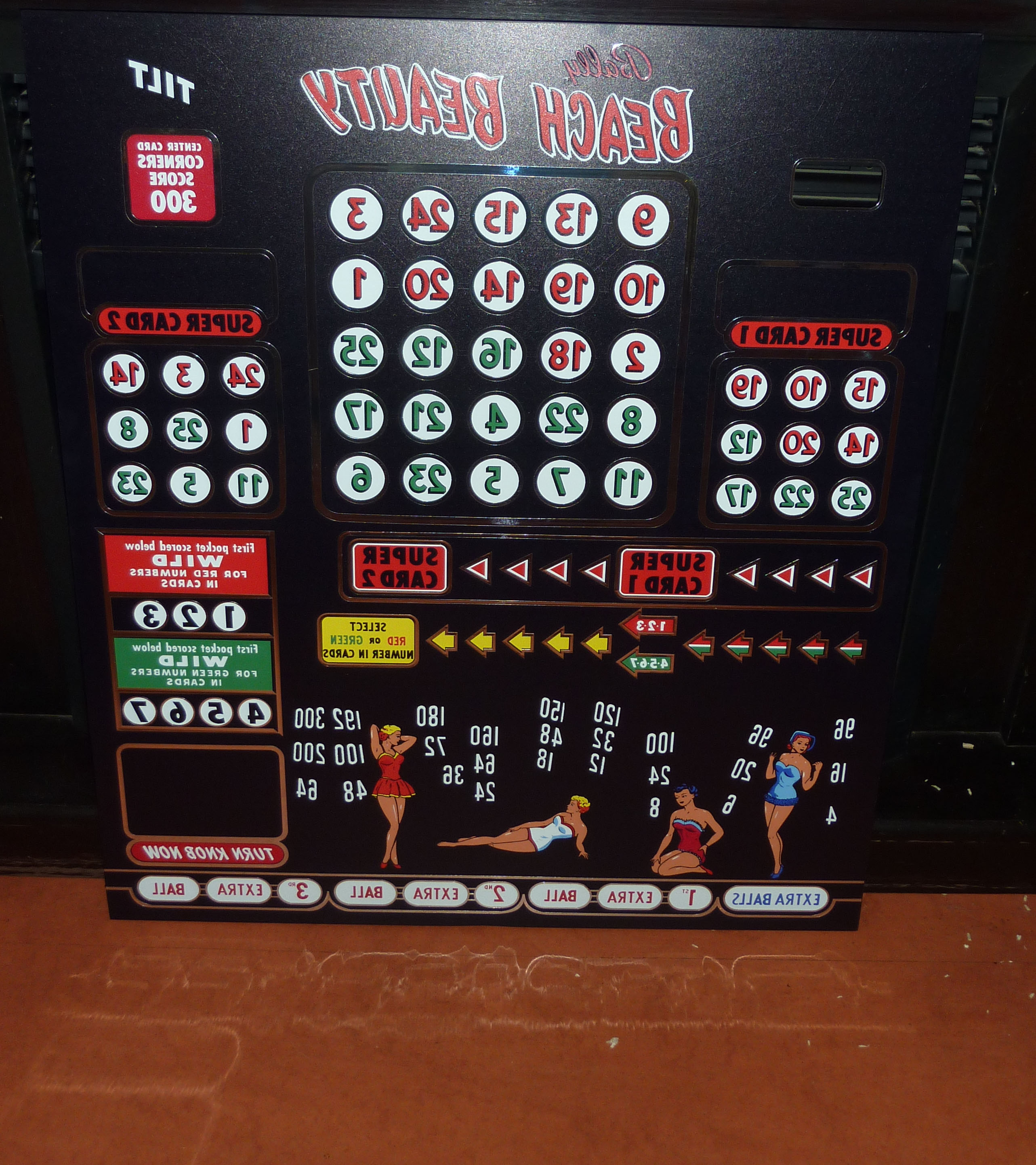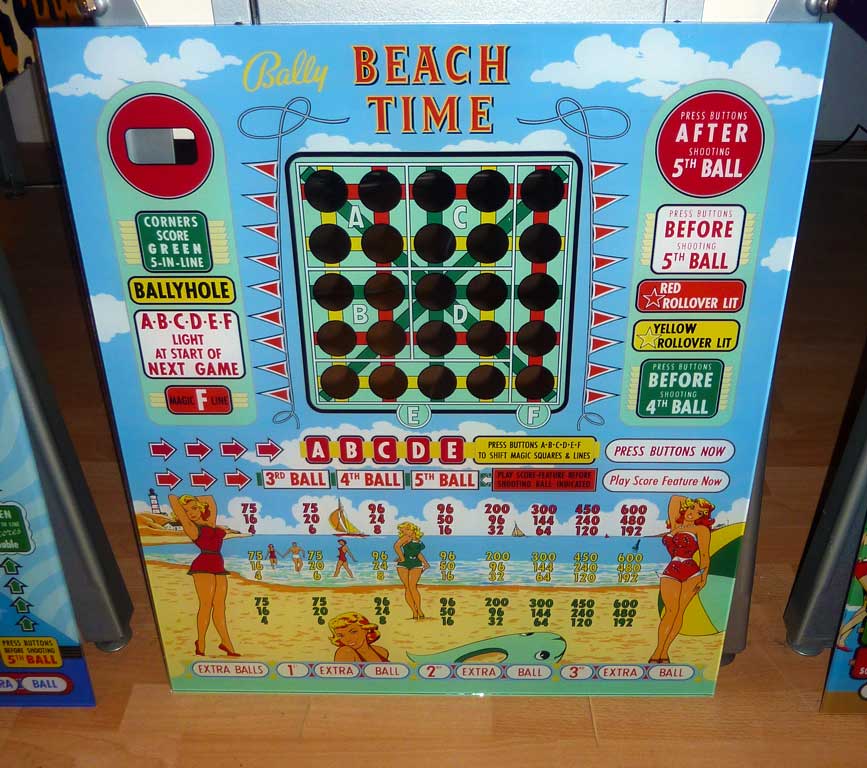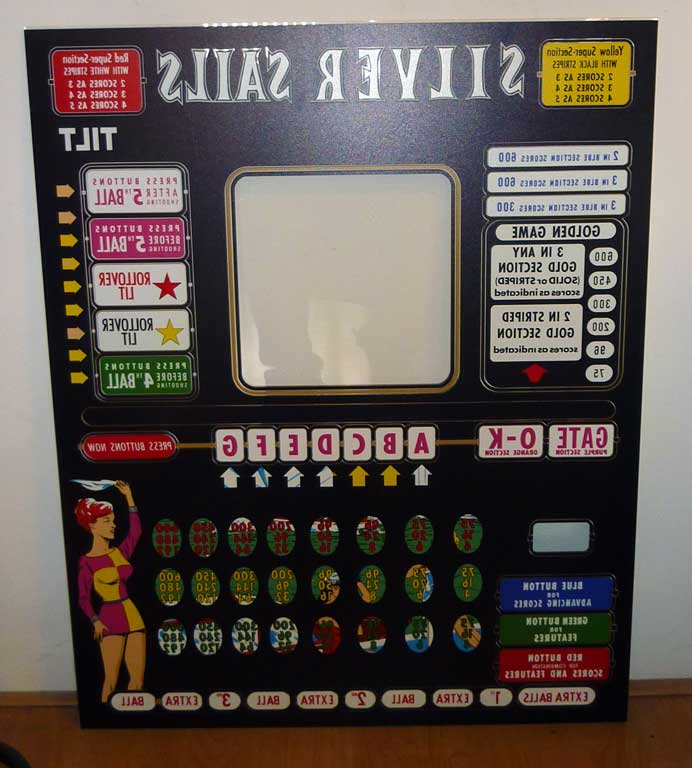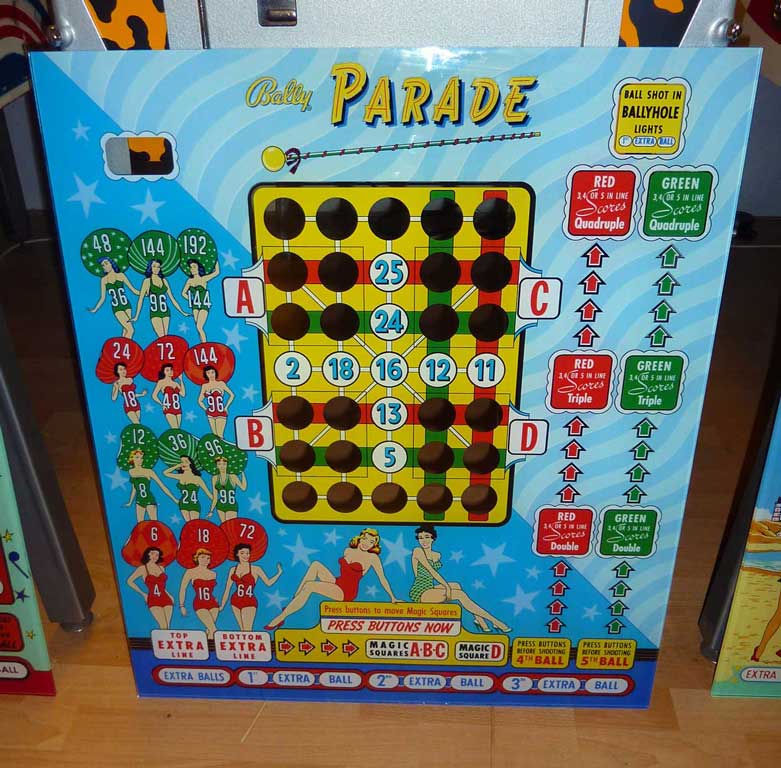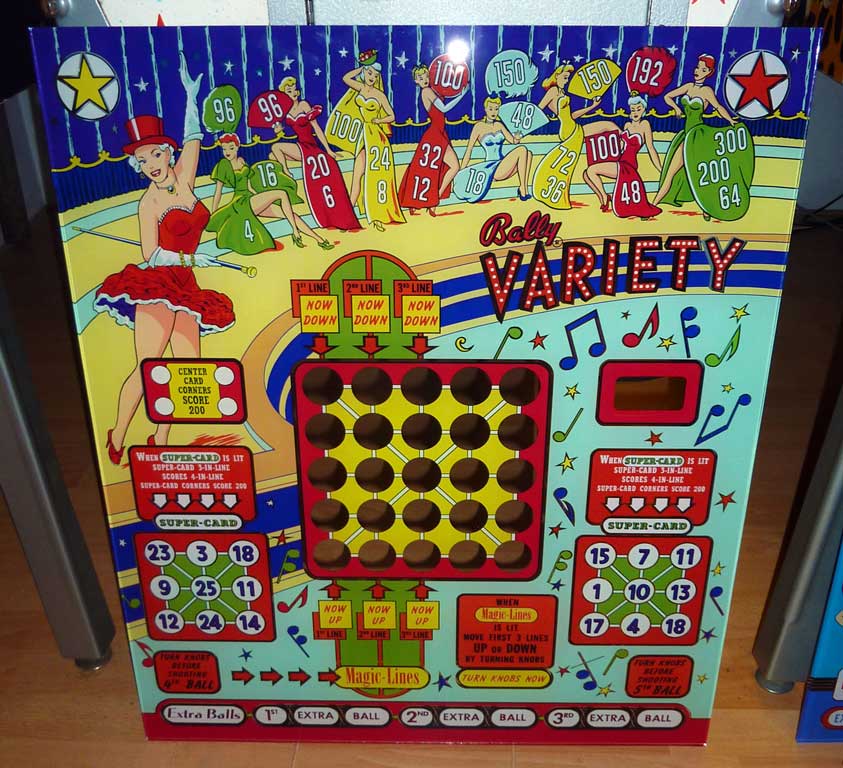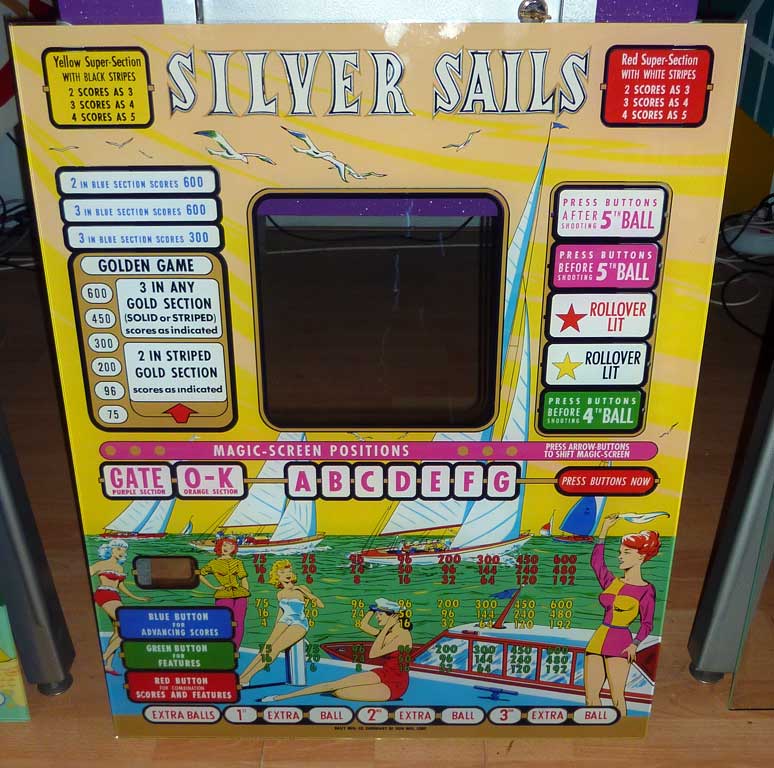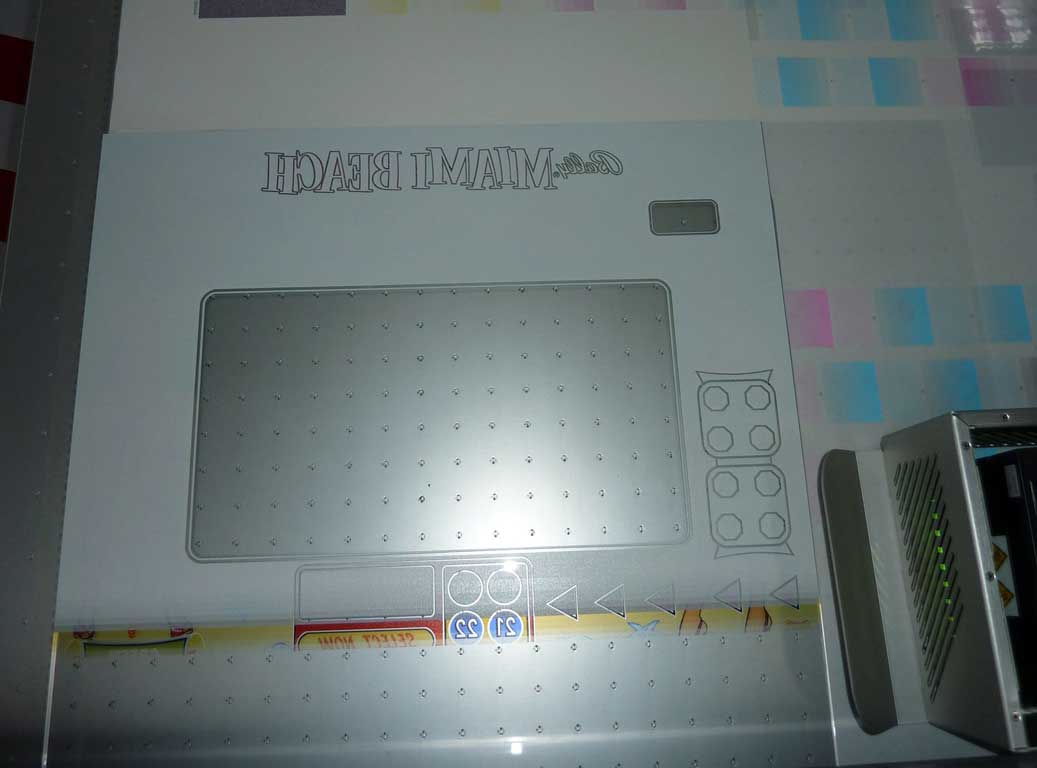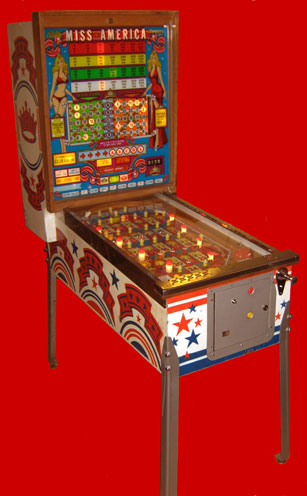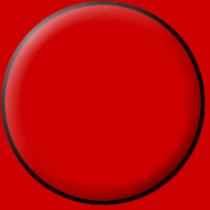


Copyright Đ 2009 by Coos · All Rights reserved · E-Mail: ballybingo@live.nl

Welcome at Bally Bingo Specials from Holland
Klik op de vlag voor nederlands
As in previous publications on this site is already written we've been busy re-creating the Bally back glasses for some time now. The way that Bally made backglasses was with old fashion silkscreen printing. The original old windows from the beginning to the period of the approximately 20 holes games came on the market, differ on one key point with the later made backglasses. The later windows were no longer having the mirror edges. It is unclear whether the technical aspects of cost have come, or that the environmental conditions underlying them. In any case, it has shown that later produced windows for the old cabinets were no longer fitted with the typical and beloved mirror edges.
We honestly considered using modern techniques on screen printing to make a backglass. But the costs were very high, and after an investigation it showed that there is no interest for this type of glass was also a major drawback is that you only can make a series of backglasses and not starting production before a number of people committed to buy such a window. Chris Dade had already a large amount of digital files of all Bally bingos and we were allowed to use them for our own experiments.
And then we started experimenting. We have visited many print-shops. Printing like Chris was relative simple. A printer could print a white sheet of paper and then you have the print of the back glass. Add a print and an opaque mask and fit the two prints between two thin glass plates and mount the glass together and the backglass was ready. The result was beautiful, but did not really come close to the original windows. So we went to look for a better solution.
What we did was color printing on a transparent foil, put this with behind a translucent white film layer and then an opaque mask on the back of a 5 or 6 mm glass , it was already a good step towards an original window. Even the printing directly on glass proved technically possible, because the glass need to have a white ink layer and this could not be print and also the color intensity was less than the original colors, this technique had to be abandoned, because we already used foil prints were the results are better.
In the meantime, we also experimented with a different type of glass. A more expensive glass that no longer would add color cast to the print. This was considered an improvement again. Instead of gray edges now became hand mirror foil mounted along the edges, so the effect of the mirror lines of the original windows approached. The windows were always beautiful, but also the process became more expensive and more labor intensive.
To the point where we are now arrived. The print-shop, which we have worked a lot with lately, showed again a new process to us. Something that may be of interest to us. The newest machines can now run all our operations in one run. The new printer can print a white layer, the white layer is the key to the intensive colors and also the sealing layer mask printing. In other words, a desired Bally bingo backglass can now be made in one run. No series required and all now work printed on glass or plexiglass if desired. The silver lines we will provide to our own backglasses must manually fit in, but we were now ready to make a backglass with gray lines to third parties, because a pane of Plexiglas is easily sent by post and glass do not have this transport option.
We honestly considered using modern techniques on screen printing to make a backglass. But the costs were very high, and after an investigation it showed that there is no interest for this type of glass was also a major drawback is that you only can make a series of backglasses and not starting production before a number of people committed to buy such a window. Chris Dade had already a large amount of digital files of all Bally bingos and we were allowed to use them for our own experiments.
And then we started experimenting. We have visited many print-shops. Printing like Chris was relative simple. A printer could print a white sheet of paper and then you have the print of the back glass. Add a print and an opaque mask and fit the two prints between two thin glass plates and mount the glass together and the backglass was ready. The result was beautiful, but did not really come close to the original windows. So we went to look for a better solution.
What we did was color printing on a transparent foil, put this with behind a translucent white film layer and then an opaque mask on the back of a 5 or 6 mm glass , it was already a good step towards an original window. Even the printing directly on glass proved technically possible, because the glass need to have a white ink layer and this could not be print and also the color intensity was less than the original colors, this technique had to be abandoned, because we already used foil prints were the results are better.
In the meantime, we also experimented with a different type of glass. A more expensive glass that no longer would add color cast to the print. This was considered an improvement again. Instead of gray edges now became hand mirror foil mounted along the edges, so the effect of the mirror lines of the original windows approached. The windows were always beautiful, but also the process became more expensive and more labor intensive.
To the point where we are now arrived. The print-shop, which we have worked a lot with lately, showed again a new process to us. Something that may be of interest to us. The newest machines can now run all our operations in one run. The new printer can print a white layer, the white layer is the key to the intensive colors and also the sealing layer mask printing. In other words, a desired Bally bingo backglass can now be made in one run. No series required and all now work printed on glass or plexiglass if desired. The silver lines we will provide to our own backglasses must manually fit in, but we were now ready to make a backglass with gray lines to third parties, because a pane of Plexiglas is easily sent by post and glass do not have this transport option.
Pictures from the new printing technique
After the special glass is placed on the vacuum table the machine can begin. This picture clearly shows that after the color coat is made immediately a white ink layer is put on. When the first step is finished and the window is completely white coated again the black mask goes over it and it is now also possible to color again the sections that will be lit. this provide us an incredible deep color if the light is on. The color depth at the illuminated boxed features are even bigger than most original backglasses. Finally we found the result we were looking for........
With the new technique itīs still not possible to make mirror edges so we still do this for our backglasses by hand. With the mirror edges we have also made a step forward because we found some better quality mirror foil in Germany and we now can put the mirror lines directly onto the glass, no more transparant foil between it, which now gives results that you have to look twice to see if itīs original or not.






















